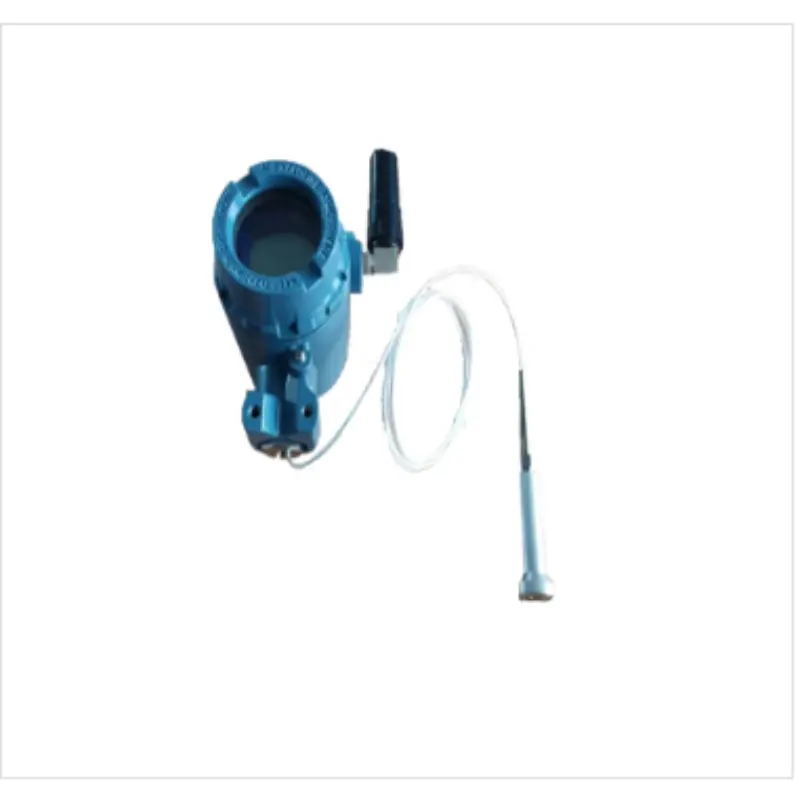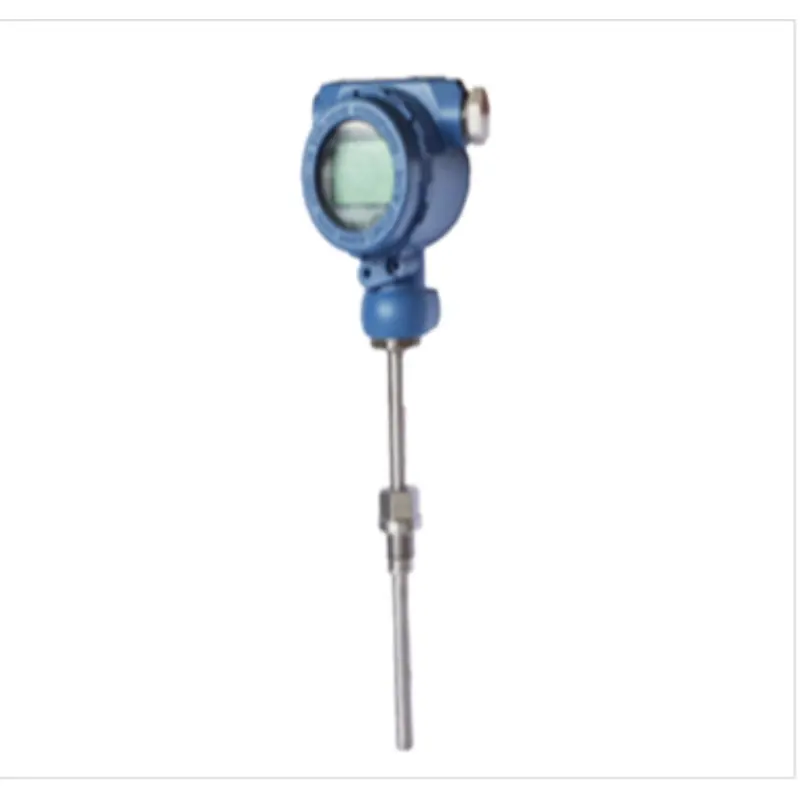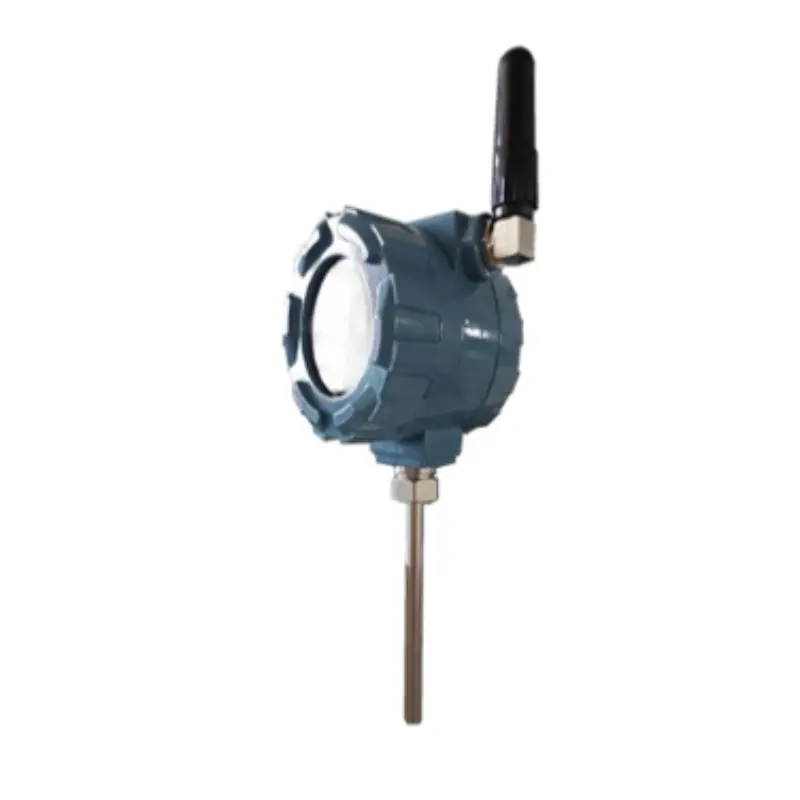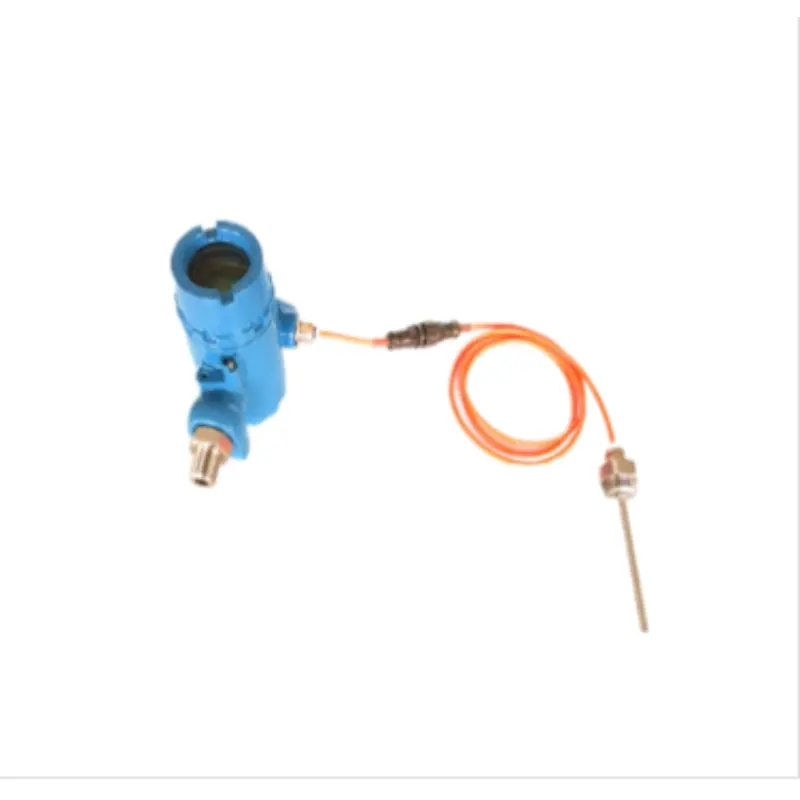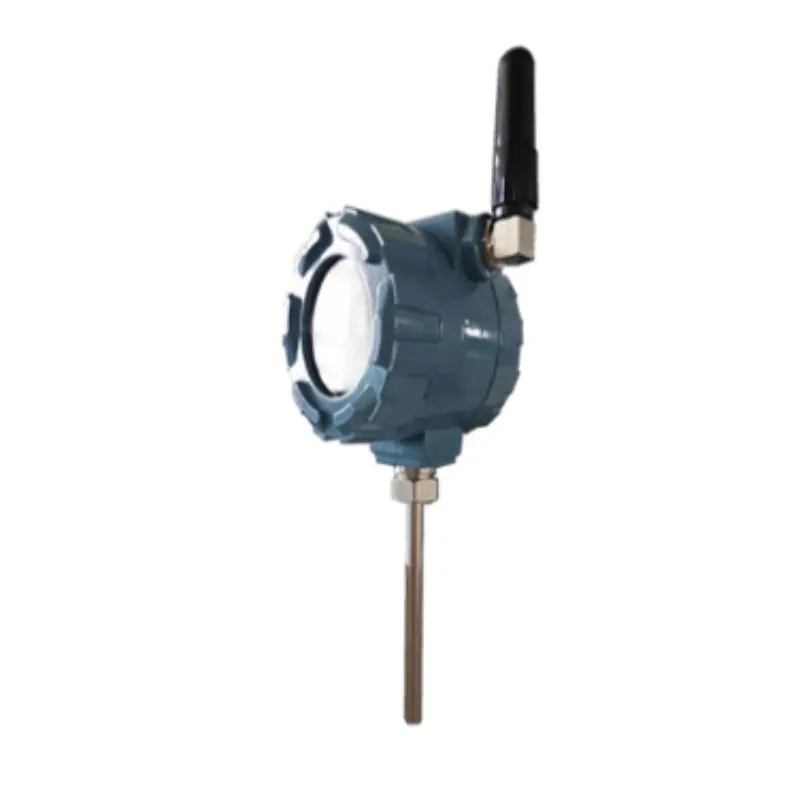
Temperature Transmitter/LoRa Wireless Temperature Transmitter SM39TWB
Product Categories Temperature transmitter
Embedded wireless data transmission module based on LoRa spread spectrum technology, using LoRa network to provide users with wireless data transmission function. Oilfield oil pipeline temperature, single well temperature of pumping well, temperature monitoring and upper and lower limit alarm; Explosion-proof design: explosion-proof aluminum shell, circuit board system is intrinsically safe; Protection level: IP68, fully sealed and waterproof design; The instrument can set alarm enable, upper and lower limits, delay, dead zone, maximum range, minimum range, decimal places, upload frequency, acquisition frequency, change alarm, and other parameters. LED indication: reset indication, configuration mode indication, network access indication, data acquisition indication; 4.5-digit LCD display: temperature data, battery capacity icon, upper and lower limit alarm, and other parameters. Adjustable installation direction: connected to the on-site pipeline valve through a live joint or adapter, the direction can be adjusted. This product has been widely used in the oil and gas Internet of Things industry.
1. Features
- The embedded wireless data transmission module based on LoRa spread spectrum technology uses the LoRa network to provide users with wireless data transmission functions.
- Oil field oil pipeline temperature, single well temperature of pumping wells, temperature monitoring and upper and lower limit alarms;
- Explosion-proof design: explosion-proof aluminum shell, circuit board system is intrinsically safe;
- Protection level: IP68, fully sealed waterproof design;
- The instrument can set parameters such as alarm enable, upper and lower limits, delay, dead zone, maximum range, minimum range, number of decimal places, upload frequency, acquisition frequency, change alarm, etc.
- LED indication: reset indication, configuration mode indication, network access indication, data collection indication;
- 4.5-digit LCD display: temperature data, battery capacity icon, upper and lower limit alarms, and other parameters.
- Adjustable installation direction: It can be connected to the on-site pipeline valve through a union or adapter, and the direction can be adjusted.
- This product has been widely used in the oil and gas Internet of Things industry.
2. Performance indicators
- Working environment temperature: -40~70℃.
- Ambient humidity: 0~95%RH, no condensation;
- Protection grade: IP68;
- Explosion-proof mark: Ex ib II C T4 Gb, explosion-proof certificate: CE18.2230X;
- Power supply: ER34615 lithium thionyl chloride battery (implementation standard: SJ52278/1), two primary batteries in parallel, capacity 3.6V 38Ah; battery connector SM-2P (female: 1-pin positive, 2-pin negative) connected to the instrument; power supply voltage range, 3.0V~3.6VDC;
- Battery continuous working time: ≥1 year (temperature acquisition frequency 1 time/min, communication frequency 1 time/h);
- Battery replacement method: Open the back cover of the instrument and quickly replace it through the standard SM-2P interface;
- Long-term stability: drift, ±0.1%FS/year;
- Measuring performance: range, 0~150℃, 0~300℃, -50~500℃; accuracy, 0.5% FS; can be customized according to actual needs; in line with relevant technical standards of GB/T 28473.2 and JJF1183;
- Temperature sensor: PT100 platinum resistor package, temperature overload capacity, 150%FS;
- Process connection interface: Probe type process connection thread M20X1.5, patch sensor is installed with clamp, the clamp size can be customized, the clamp material is 304 stainless steel, the connection line length is greater than 1 meter, and it is connected with a metal hose.
- Communication method: LoRa multiple frequency bands (433/470/780/868/915MHz);
- Communication theoretical bandwidth: 6 levels adjustable (0.3, 0.6, 1.0, 1.8, 3.1, 5.5 Kbps)
- Online debugging and setting function: It can debug and set the instrument through computer + wireless receiver without uninstalling online installation; the setting data content includes:
- Communication working parameters: network number, air rate;
- Measurement working parameters: alarm enable, upper and lower limits, delay, dead zone, maximum range, minimum range, decimal places, upload frequency, acquisition frequency, change alarm;
After the instrument is powered off, the setting data is retained;
- Online upgrade: It can be realized by configuring the serial port and using a computer without uninstalling the installation.
- Liquid crystal (LCD) display: LCD display area, length × width = 45 × 35mm, background color is green, display content includes real-time measurement value, temperature unit, instrument range, battery power, voltage, signal strength; real-time measurement value decimal point can be set, by default retaining 2 decimal places;
- Instrument housing: Made of aluminum alloy, the housing seal (gasket) is silicone rubber, and the front and rear cover threads are coated with vaseline; the dial diameter is 60mm, and the exterior color is RAL5007;
- Dimensions: length × width × height = 150 × 130 × 235 mm (MAX). (Excluding probe length)
- Sampling interval: The sampling interval can be set from 1 to 60 minutes.
- Sending interval: 5 to 1440 minutes.
Explosion-proof certification parameters
- Explosion-proof certificate number: CE18.2230X
- Explosion-proof mark: Ex ib ⅡC T4 Gb
- Appearance structure and function introduction

 Front panel LED: Red represents the temperature collection state and the sleep to wake-up state. Front panel reset: Use a magnet to move the magnet upwards towards the reset arrow directly below the front cover of the housing. After stabilizing for 3-5 seconds, remove the magnet. The red LED light flashes 3 times and the LCD display 8888 also flashes three times synchronously, indicating that the instrument is successfully reset. The main purpose of the reset is to enter the instrument to modify internal parameters, or refresh the current temperature value, and re-establish the network link. 5. On-site installation instructions 5.1. All transmitters are digitally calibrated, and different transmitters have complete consistency and interchangeability; 5.2. During transportation, all transmitter batteries are disconnected. When installing the temperature transmitter on site, you need to unscrew the back cover of the meter head and turn on the battery switch. Pay attention to tightening the sheath to prevent water leakage; 5.3. Installing a cellular network temperature transmitter on a pipeline (1) Shut down, depressurize, and drain the pipeline. Open a hole on the pipeline that is slightly larger than the outer diameter of the sensor probe blind tube sleeve; (2) Insert the blind tube sleeve vertically from the opening to the bottom of the pipeline, and then seal and weld it to the pipeline along the hole; (3) Inject heat transfer oil into the blind tube sleeve, about 1/2 of the volume of the pipe; (4) Insert the temperature sensor probe into the blind tube sleeve, adjust the direction of the meter head, tighten the union with a wrench, and resume pipeline transportation. 5.4. After the installation of this wireless temperature transmitter is completed, the network parameters can be set by pressing buttons or debugging tools. 5.5. If the transmitter is not used for a long time, the temperature transmitter can be set to sleep mode through the debugging tool (the transmitter is uniformly set to sleep mode or closed during the factory storage process, and it needs to be activated on site before it can be used normally). The online list of the debugging software interface is as follows: 6. Precautions 6.1. The battery model used in this product is ER34615H-3.6V38Ah; other battery models are prohibited. 6.2. The product antenna shell is made of plastic material, which has potential electrostatic charge hazards! Avoid friction during use! Please wipe with a damp cloth when cleaning!
Front panel LED: Red represents the temperature collection state and the sleep to wake-up state. Front panel reset: Use a magnet to move the magnet upwards towards the reset arrow directly below the front cover of the housing. After stabilizing for 3-5 seconds, remove the magnet. The red LED light flashes 3 times and the LCD display 8888 also flashes three times synchronously, indicating that the instrument is successfully reset. The main purpose of the reset is to enter the instrument to modify internal parameters, or refresh the current temperature value, and re-establish the network link. 5. On-site installation instructions 5.1. All transmitters are digitally calibrated, and different transmitters have complete consistency and interchangeability; 5.2. During transportation, all transmitter batteries are disconnected. When installing the temperature transmitter on site, you need to unscrew the back cover of the meter head and turn on the battery switch. Pay attention to tightening the sheath to prevent water leakage; 5.3. Installing a cellular network temperature transmitter on a pipeline (1) Shut down, depressurize, and drain the pipeline. Open a hole on the pipeline that is slightly larger than the outer diameter of the sensor probe blind tube sleeve; (2) Insert the blind tube sleeve vertically from the opening to the bottom of the pipeline, and then seal and weld it to the pipeline along the hole; (3) Inject heat transfer oil into the blind tube sleeve, about 1/2 of the volume of the pipe; (4) Insert the temperature sensor probe into the blind tube sleeve, adjust the direction of the meter head, tighten the union with a wrench, and resume pipeline transportation. 5.4. After the installation of this wireless temperature transmitter is completed, the network parameters can be set by pressing buttons or debugging tools. 5.5. If the transmitter is not used for a long time, the temperature transmitter can be set to sleep mode through the debugging tool (the transmitter is uniformly set to sleep mode or closed during the factory storage process, and it needs to be activated on site before it can be used normally). The online list of the debugging software interface is as follows: 6. Precautions 6.1. The battery model used in this product is ER34615H-3.6V38Ah; other battery models are prohibited. 6.2. The product antenna shell is made of plastic material, which has potential electrostatic charge hazards! Avoid friction during use! Please wipe with a damp cloth when cleaning!



